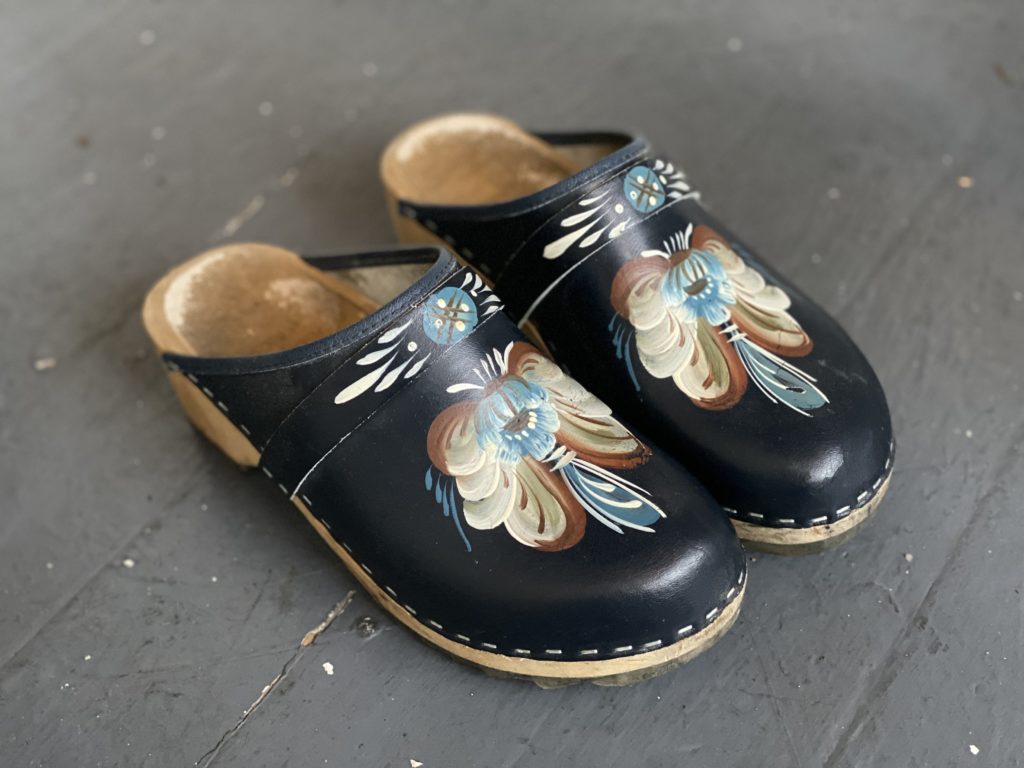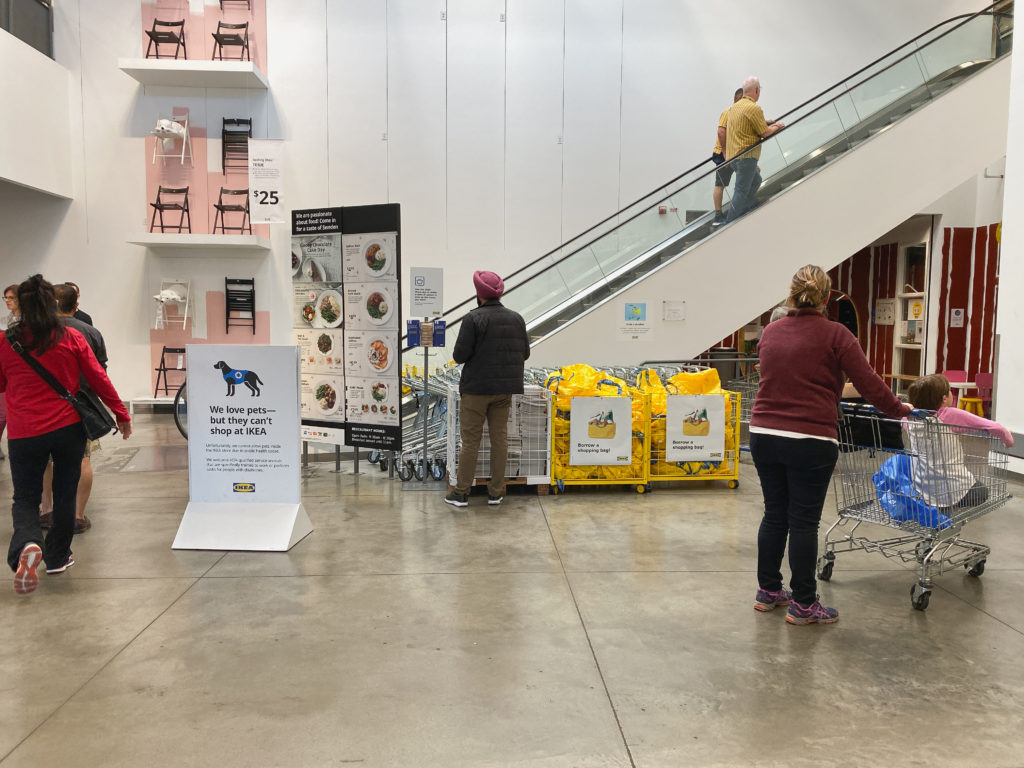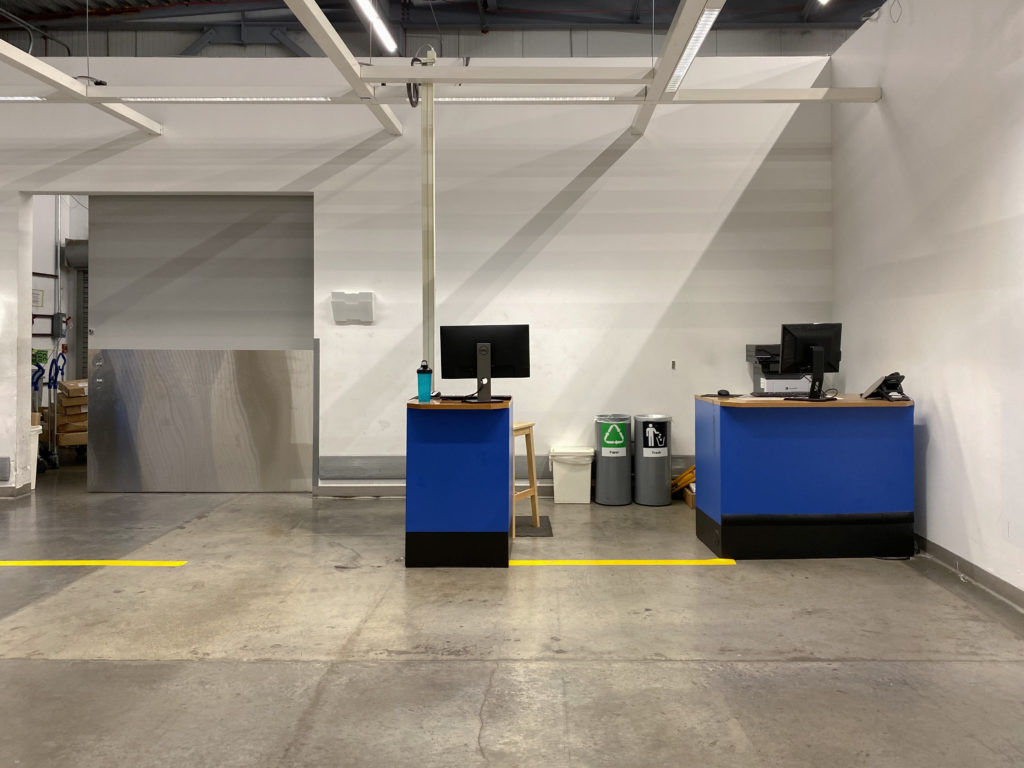
I don’t use my kurbits painted made in Sweden clogs very often, but I appreciate how they match the spirit of the floor of our screen porch and entryway.

I don’t use my kurbits painted made in Sweden clogs very often, but I appreciate how they match the spirit of the floor of our screen porch and entryway.
Through interacting with Swedish-Americans, mostly online, I’ve learned that what is perceived as Swedish in the United States differ widely from what is perceived as Swedish by present-day Swedes. Descendants of Swedish immigrants to the US keep alive traditions that may have died out in Sweden long ago. Swedish immigrants also intermarried with other Scandinavians, and their descendants mix and match between the traditions sometimes unknowingly. One example: All Americans talk about lutefisk, not knowing that is the Norwegian word. (Swedish: lutfisk.) Lefse (a flatbread) is also assumed to be solidly Swedish even tho it’s mainly Norwegian.
Many Swedish American foods and practices remind me of my grandparents, all born at the end of the 1800s and the very early 1900s. Old fashioned cooking principles involved boiling the life out of both meat and vegetables and/or covering them in heavy flour bases sauces. My mother’s generation rebelled against much of this, and for good reason.
Customs or dishes common in Sweden today usually don’t make their way across the Atlantic. If they do, it’s in popularized or bastardized versions. Hygge (a Danish word referring to creating moments and spaces of laidback cosiness) and fika (the Swedish tradition of having coffee and conversation) are two examples.
All this means that the Swedishness of Swedish American culture feels old-fashioned and limited to a Swede of today. There are many possibilities for misunderstandings, contradictory interpretations, and arguments. Both sides feel strongly that their version is the correct one. I surprise myself by being quite invested in the discussions. My own Swedishness comes out more judgmental and argumentative than I’m really willing to admit.

A Swedish-American woman I know always talks about IKEA as The Mothership. IKEA is a place where Swedes living abroad get to reconnect with their roots, stock up on necessities, and feel the joy of being surrounded by your first language. I remember going through the showroom with an American friend once, and she was amazed that 1. all product names are actual Swedish words, and 2. all books they use for props are actual Swedish books. (I asked to buy one of the books because I wanted to read it, but was turned down.) I think she felt my knowledge of Swedish had gained her access to a secret world.
I love the smell right where you enter the warehouse part of the store. The smell of wood mixes with cinnamon from the cinnamon rolls they sell near the exit. In America, even if it’s at The Mothership, the cinnamon rolls are nothing like Swedish cinnamon rolls, tho. They are too large, too sweet, too covered in icing. But the smell of cinnamon seems pretty authentic to me. At that spot it smells of wood shop class (my favorite) and a Swedish bakery all at once.

I also like the efficiency, the utilitarian decor, and much of the design. And the meatballs. Also:
– Scent-free candles for us migraines sufferers.
– Spend a little time looking and you’ll find simple furniture that works anywhere. It’s OK to paint stuff if you’re looking for a particular color.
– Sign up for the newsletter and pay attention to limited series of design collaborations.
– Avoid shipping larger items. It’s totally unreliable and extremely frustrating.
– Shipping smaller items is cheap (around $10), and your stuff will arrive via FedEx. No problems there.

I’ve never brought a lot of things with me from Sweden, but I find that I can buy what want and need in the US. Buying used stuff second-hand I end up adopting what Swedes of previous generations have brought with them to America. Sometimes I feel like I am saving, rescuing even, the objects. I understand them. They will be safe with me.